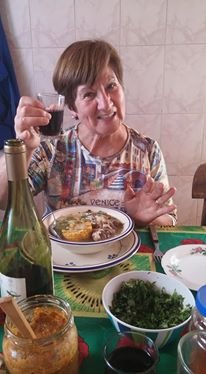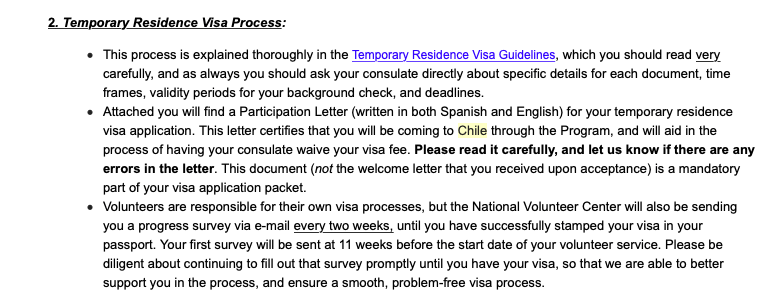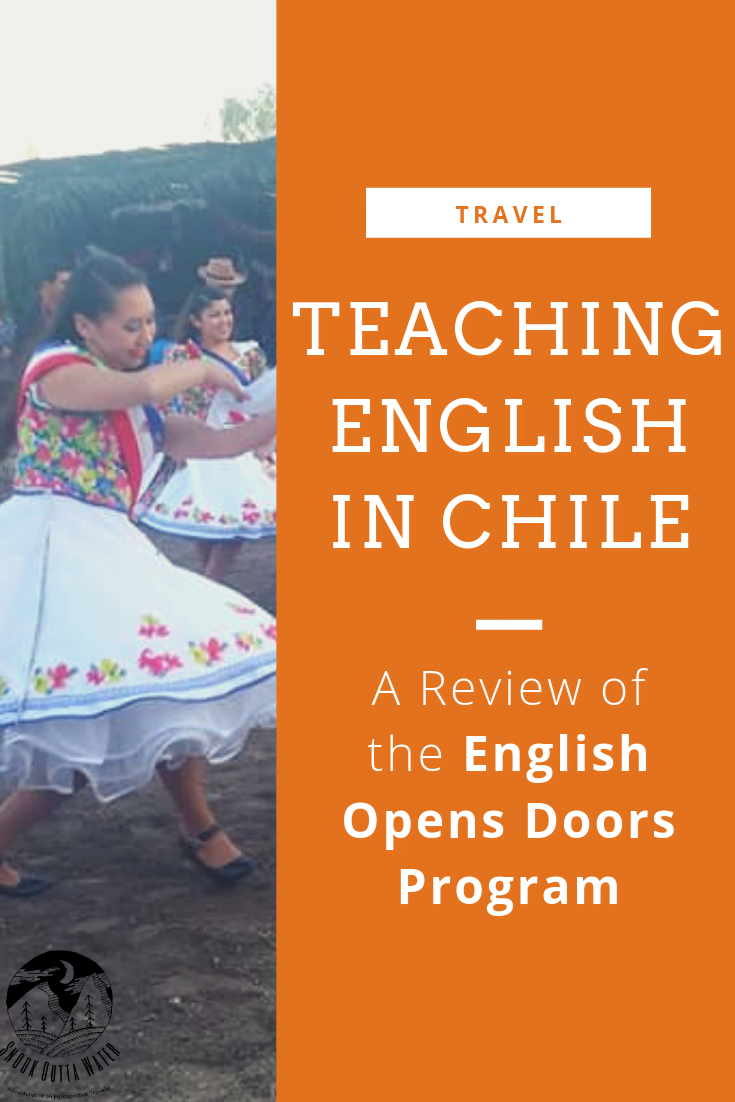If you want to travel and teach English in South America, The English Opens Doors Program (EODP), or Inglés Abre Puertas, is a good opportunity to find a job in Chile. I chose to do the EODP program and spent eight months teaching abroad in Chile. I was placed in Sagrada Familia, a very small town in the Maule Region. Since it can be difficult to find English teaching jobs in South America before you arrive, I find that this program is a great way to start out teaching. So, here's my thorough review of the English Opens Doors Program so that you can make the decision if you'd like to partake or not.
If you’re too impatient for all that, here’s my review of the English Opens Doors Program summed up in a nutshell: You're separated from other foreign teachers and placed in homestays, so it’s great for cultural immersion and learning Spanish. You have a lot of autonomy and independence at your school, although the downside is that the Chilean Public School system is chaotic and disorganized. Additionally, you will not make a lot money doing this program and need to arrive with money saved up.
What is the English Opens Doors Program?
The EODP is a program supported by Chile’s Ministry of Education. English education is now compulsory in Chile’s school system, and the EODP was created in 2003 to help improve student’s levels of English within public schools. The focus is on conversational, spoken English for students in fifth through twelfth grade. Additionally, there are EODP summer and winter English camps that participants help run.
Since this is a government-run program, funding can vary per year. When I arrived, there was some talk and fear that the government would stop funding the program. That, however, didn't come to fruition but can be a concern.
What are the Requirements to do English Opens Doors?
To do the English Opens Doors Program, you do not need to have teaching experience, a TEFL certificate, or any Spanish language knowledge (all of these will help on your application, though). This is rare in the world of teaching English abroad, so take advantage of this!
Where Are You Placed in Chile?
The EODP has you fill out a preference sheet on your preferences on where you’d like to go in Chile, if you want to be in a city or town, etc. However, by and large you are just placed where a volunteer is needed. Specific dietary needs (vegetarian or allergies) are given top priority. Most volunteers are placed in rural villages; very few stay in Santiago.
You receive what region you’ll be going to a few weeks before you depart so that you can pack accordingly (since the climate varies immensely in Chile). However, you don’t receive your specific location, school and host family until after you’ve arrived in Santiago.
My Review of The English Opens Doors Placement Process
3/5 Stars: Not much control over where you go; not notified of location until last minute
The initial placement email I received said that I was going to the Magallanes Region, the region furthest south in Chile. I was ecstatic! That area is ridiculously beautiful (but also quite dreary during winter).
However, a few days later I received a second email saying that my placement in the Magallanes Region had fallen through and that I’d be placed in the Maule Region, a few hours south of Santiago. It’s the most rural region in Chile, and also has the lowest English scores in the country: so, a lot of volunteers are sent here.
After arriving in Santiago and being there for about a week, I received the email from my regional director about my school placement and location, along with my host family. I looked it up on a map, saw next to nothing, and just hoped for the best.

The scenery of the area near where I lived from atop a large hill
Later, my host mom told me that she had applied for a volunteer only a week before I had arrived. Things are sometimes done last minute in Chile, although my situation seemed like an exception since I was originally supposed to be placed in a different region entirely.
So, if you want to do this program you need to get into a go with the flow mindset, because information will not be given to you in a very timely manner.
Pay, Time Commitment and Lodging Options
If you do English Opens Doors, you are a volunteer. You can choose between either a 4-month or 8-month commitment, so the time frame is much shorter than most other teaching abroad gigs. You receive a stipend that is the equivalent of 70.000 CLP (about $100) per month, however you don’t receive the stipend monthly. For the 8 -month volunteers, you receive two installments of the stipend; once halfway through, and once at the end. If you only volunteer for 4 months, you don’t receive the stipend until the end of your time volunteering.
The vast majority of EODP volunteers opt to live with a host family: in this scenario, your accommodations are taken care of, and as long as you’re eating at home all of your meals are provided for.
The alternative option is to choose to live independently, in which case the program provides you with the monthly amount that the host family normally would receive – an additional 165.000 CLP per month ($237). This amount plus the stipend is generally not enough to cover all costs, so you’d need to have money saved up for this. The program does, however, give you this amount per month, rather than only paying you in two separate installments.
What's Included in the English Opens Doors Program:
What’s Not Included:
My Review of EODP’s Pay
2/5 Stars: The stipend is low and not paid out monthly. However, there are no fees to joining the program and most expenses are paid for.
The pay is not good: it's a stipend, not a salary. You need to arrive in Chile with money, and be prepared to use it, which is exactly what I did. I didn’t know beforehand, however, that I would receive the stipend in only two monthly installments and I hope that they now make this more clear to the participants. Thankfully I had enough money saved up, but if I didn’t this would have been difficult!
Also, living with my host family and living in a very rural area, my daily expenses were next to nil (this is not the case for volunteers stationed in larger cities). I occasionally went out to eat and went to the nearby “city” to go out, but I spent most of my money on travel while there.
It's also important to note that the vast majority of fees are covered, except for your plane ticket. There are a lot of teaching gigs abroad that actually charge you to go teach or volunteer: this is certainly not the case here.
My Review of My Home Stay in Chile
5/5 Stars: My home stay was incredible: I was provided with my own room and bathroom, and my host mom did much more than what was required.
Related Article: My Chilean Host Mom: A Face of Resilience
Ah, this was one of the best parts of my time in Chile! My host family was absolutely incredible, in particular my host mom. They had three kids, one of which still lived at home, and another who lived in the same town (the oldest moved to Santiago). I was their first host kid, so my host mom was thrilled to have me, very hands on, and really just went above and beyond to make me feel welcomed and included.

My excellent host mom
I frequently stayed with another volunteer’s host family in Santiago, and although they were quirky, they were awesome as well. Most of the stories that I heard from other volunteers were all positive home stay stories, although with some notable exceptions. If you truly can’t stand your home stay, you can ask to switch.
One volunteer that was there at the same time as me switched after receiving a very religious family that tried to convert him to Catholicism and bring him to church with them.
Unlike my experience in Morocco, my host family was relaxed, drank wine frequently, and didn’t care if I went out and how long I stayed out. I felt that I could converse with my host mom about pretty much everything, and really enjoyed my time there.
Of course, if you’re very introverted and need personal space, there isn’t much in Chile. Family is constantly over and if you stay in your room too long they’ll probably knock because they think that you’re not okay.
The Chile Work Visa Process and EODP Support
EODP provides good support before you arrive in regards to the visa process, and lets you know exactly what you need. You submit an online application to the nearest consulate and set up an in-person “interview,” where you receive the visa sticker that’s placed in your passport immediately (so, no return trip needed).

An excerpt of one of the many thorough emails from EODP
You don’t have to pay a dime for the visa, but you do have to pay for transportation to and from the consulate.
Once you arrive in Chile at your host family location, you have to go to the nearest visa police department (my small town actually had one) and get your residency permit. Where you need to go is different than the actual police station, so ask for assistance. Your residency permit card will take a few days to process, and then you can pick it up and you’re set.
My Review of EODP's Support in the Visa Process:
4.5/5 Stars: The pre-arrival visa support is very good. Once you arrive, you have to get the residency permit by yourself, but can ask your host family for support.
Getting a Chilean work visa is insanely simple! Especially since I’ve now gone through the visa process for China.
The English Opens Doors program sends you emails with specific tasks and deadlines, so they make the process easy and streamlined. The Chicago Chilean consulate was also literally empty when I arrived, so it took perhaps 15 minutes total to get my visa.
As far as getting your residency permit in Chile, if you don’t speak Spanish you can take a host family member with you when you need to go.
EODP’s Training and Teaching Support
All of the volunteers arrive in Santiago, and are put through two weeks of training. The majority of the time is spent on lesson planning and how to teach in 100% English to students that have very low levels. You’re also given some tips on Chilean culture, information on your host family and school location, and how to adapt your lesson plans to the units that are being learned at school.
Once you arrive at the school you’ll be working at, you'll go through a brief regional induction with your partner teacher and the other starting volunteers and their teachers (if it isn't located where you stay, you can get reimbursed if you provide your transportation ticket).
Additionally, each region has a regional director who does one observation of each volunteer’s class and provides general feedback. You also need to create your schedule with your local English teacher and provide a copy to the EODP headquarters in Santiago. They’ll give you a check-in call in about your second week there.
You're also supposed to ask your partner teacher about the local teacher's network so that you can go to monthly professional development sessions (if you have class during that time, you can get excused).
My Review of EODP’s Teaching Support:
2.5/5 Stars: Orientation training in Santiago is stellar; however, after that it's on you to reach out. Professional development is very limited.
Related Article: The Ethical Dilemmas of Teaching English Abroad
As someone who had worked in schools before in the states, I didn’t feel wholly unprepared walking into the classroom. However, many other volunteers did: teaching English in Chile isn't always easy. The two-week training is valuable and does provide you with a lot of tools that you can draw from, but the ongoing support is next to nonexistent.
If you like planning your own lesson plans and being on your own, then the English Opens Doors Program is really nice. They do provide you with a lesson plan library, which essentially includes old lesson plans that previous volunteers have submitted. While I was there, it wasn’t very helpful and the lesson plans were so varied that it was difficult to plan a thorough unit off of them..
I had my one observation from my regional director, and that was that. She was very nice, but extremely busy and had to travel throughout the region to observe different volunteers. When I did have issues with my room, though, she was helpful and addressed them with the school.
My town also apparently didn't have a teacher's networking group at all, according to my partner teacher. During the last few months of my stay in Chile, I was able to go to some networking meetings located in nearby Curicó.
Liking this thorough post? Sign up to receive monthly emails keeping you up to date.
Your Role As an English Teacher in Chile
The EODP’s model is one of co-teaching and co-planning with a local English teacher at your school. You’re partnered with a local teacher, and take on his/her schedule (although you can only work a certain amount of academic hours, so if your teacher has more than what’s required, you’ll teach slightly less classes).
Each class is 80 minutes long, and so for 40 minutes you receive the first half of the class and for the next 40 minutes you receive the second half of the class. This makes the classes much more manageable, as the majority of classes in Chilean public schools exceed 30 students.
Ideally, you should be co-planning with your partner teacher and creating lesson plans based off of the units that your teacher is covering in class. This rarely happens, but more on that later.
You’re also required to have your own room. The model at most Chilean public schools is that each class of students has a room and the teachers don’t, so the teachers switch classrooms. As most schools are over-crowded, this is usually the most difficult part for public schools to accommodate a volunteer. Many volunteers are put in the library, computer lab, or a spare room.
English Teacher Responsibilities with EODP:
My Review of English Teaching With EODP
3.5/5 Stars Overall Rating (includes teaching, co-planning, class schedule, lesson planning, after school program, school consistency, my classroom, and English Day)
This part is the bulk of the job, so I've broken it down into further subsections.
Teaching English
4/5 Stars: I enjoyed working with my students, although many weren't interested in learning English. However, my classroom experience was very much shaped by my co-teachers.
I was placed in a trade high school, so by 11th grade the students decided if they wanted to study agriculture, engineering, nursing or humanities. My partner teacher had all 11th and 12th grade classes, so I did as well, plus an additional two 10th grade classes that were with a different teacher.
Overall, my students were fun! Their levels of English were absurdly low, so my lesson plans revolved around greeting, expressions, parts of the body, daily routines, and the like. There were some classes, such as the agriculture class, that just didn’t have much incentive to learn English, and for good reason. They were, for obvious reasons, more difficult. Most of my students seemed to enjoy my classes, and I developed good relationships with a lot of them.
The good thing about my partner teacher is that she established from the get-go that all students must go to my class and treat me as a “real” teacher. She was good at classroom management and laying down ground rules, which bled over into my class and helped me a lot. The two classes I struggled with most were with the separate English teacher, since he never really established that my class was mandatory, and didn’t care if they went or not. Since his class was usually quite chaotic, most of the students just didn’t show up to my class. Rather than stress out, I just worked with the students that came, marked the other ones as absent, and gave them failing participation grades at the end. But it goes to show that your experience is largely shaped off of your partner teacher(s).
Co-Planning With My Partner Teachers
1.5/5 Stars: I really didn't co-plan with either partner teacher, although one did provide me with her basic units and textbook pages.
I tried to co-plan with my partner teacher, but planning lessons isn’t a huge thing in Chile. She would mainly show me the textbook pages. The student’s level of English was so low that I couldn’t feasibly create a conversational English lesson plan off of what was included in the unit. So, I usually just did my own lesson plans and that was that.
I also had two classes with a different English teacher, and he never provided me with lesson plans or anything so, again, I just did my own.
Class Schedule & Lesson Planning
4.5/5 Stars: A 3-day class workweek, and a very flexible schedule for lesson planning.
Both English teachers at my school were part-time, which meant that I only had classes on Monday-Wednesday. However, the classes were quite packed in, especially on Monday and Tuesday, which meant two very stressful days. I used Thursday and/or Friday to lesson plan, where I was able to choose if I wanted to plan at school, at my house, or wherever. This 3-day week was not the norm: most other volunteers had classes 4-5 days a week.
After School Program
1/5 Stars: After English Debate Club for a couple of months, I never had an after school program (although I wasn't upset by this).
I never had an after school program. There were literally no after school programs at my school (the school days is very long!) and the majority of my students had to catch the bus to go home. I did do English debate club for the first few months, which I counted as my afterschool program, but once that I ended I never made a new one. For the debate club, my co-teacher and I pulled the students out from classes once a week to practice.
The EODP did not enforce this, and didn't make the after school program a priority. Quite frankly, the way the school day was set up made after school programs very difficult to do in Chile.
Consistency
2.5/5 Stars: My class schedule never changed throughout the year, but classes were frequently cancelled last minute.
I did teach all assigned classes consistently, but there were a lot of interruptions in student’s schedules. I’d be informed an hour before class that all the students were on a field trip that day. Or I’d be told the day before that the teacher needs all the students for an exam. Or there’d be a football (soccer) game on, and so classes would be cancelled. You just gotta roll with it when it comes to the public school system in Chile.
My Classroom
3/5 Stars: I was in the library, and initially had a few problems that were mostly resolved. However, the library isn't exactly a private classroom.
As stated above, the EODP makes it a requirement for schools joining their program that they provide volunteers with a separate room for teaching. This, however, is not always what happens. My “room” was the library. In the beginning, I was frequently getting kicked out of there because the library was the nicest room in the whole school. So, if there were any guests, teacher meetings, or whatever else, they’d tell me to find a new room to teach in. Teachers would also send small groups of students to the library to do computer work, and they’d sit there and talk while I tried to teach.
I did communicate both of this with my regional director, and to give her credit she sorted it out and they stopped doing this. This also made me feel bad, though, because I was then cutting off the library from students and staff accessing it on my teaching days.
The "librarian" (he wasn't a librarian) stationed in the library also tended to have conversations with other people during my classes. Sometimes he'd also interject in my class and say an off-color joke. This was awkward for me, so I just put up with it and did not bring this to my regional director's attention. Additionally, I knew it was a pain for him to have to deal with my English classes, so I'm sure the thoughts were mutual.
English Day
3/5 Stars: English Day did happen, but no thanks to my partner teachers.
My partner teacher and I also did an English Day near the end of my stay there, but she decided to take maternity leave the day of the English Day. She told me the day before. The other English teacher felt “left out” and didn’t feel like he should be a part of it, so English Day was made optional and it was left on me to follow through with it. It was still fun, though, and the classes that did participate seemed to enjoy it and have a lot of fun. They received a bonus grade in English class for participating.
English Opens Doors and Travel
If you do the 8-month option, you receive a few allotted vacation days that you can take – I don’t believe that you receive any vacation time with the 4-month commitment, for quite obvious reasons. The EODP recommends that you take them in conjunction with winter break so as to stay consistent (and also because truly nothing gets done at Chilean public schools right before holidays). I did this, so I took time off in July and traveled to Argentina.
Related Article: Traveling Chile for 1 Month: Our Budget & Itinerary

A glacial lake near Pucón: so much to see in Chile
My Review of EODP and Travel
4/5 Stars: You certainly have time to travel, but maybe not the money to do so.
Particularly with my 3-day workweek, EODP was very compatible with additional travel. I just had to communicate with my host family about where I was going, and as long as I didn’t have classes could go wherever I wanted.
Just be aware that in the Chilean public school system, there seem to be no substitute teachers unless the regular teacher has gone on an extended leave of absence, so if there’s no teacher, there’s no class. Since you’re splitting the class with your partner teacher, if you’re absent it usually isn’t a big deal: the partner teacher will just have the whole class (although if your partner teacher is absent, you should not be teaching the whole class all at once).
Of course, since you’re not getting paid much you need to budget accordingly when it comes to travel.
Want to Travel Chile on a Budget?
Check out my review of Workaway and see if it's for you. My boyfriend and I spent two weeks volunteering via Workaway near Pucón, Chile on an organic farm. It was perhaps our best travel experience in Chile and saved us a ton of money!
My Overall Review of the English Opens Doors Program
4/5 Stars: I really did enjoy my time teaching in Chile. I had a lot of autonomy, a wonderful host family, and time to travel. Dealing with chaotic situations and disorganized systems was annoying but not a deal-breaker.
Pros and Cons of EODP
Pros
Cons
Should You Do English Opens Doors Chile?
The golden question that no one can answer except yourself! You’ve seen my reviews of the different components of EODP, but at the end of the day you may have different priorities than I did.
If you prioritize autonomy at your job, cultural immersion and Spanish language learning then EODP would be a wonderful program for you. In addition, if you value public school education and don’t want to sell out to a private school, then this is your job! However, if you can’t handle disorganized people and systems, want to make more money, and want to be in a big city, then EODP most likely isn’t going to suit your needs.
Know that although there were hiccups throughout, I would never trade doing the English Opens Doors Program and do recommend it, as long as you have the money saved up to make the trip happen.
Liked this post? Pin it!

Subscribe to receive Snook Outta Water's monthly newsletter with exclusive updates and content.


